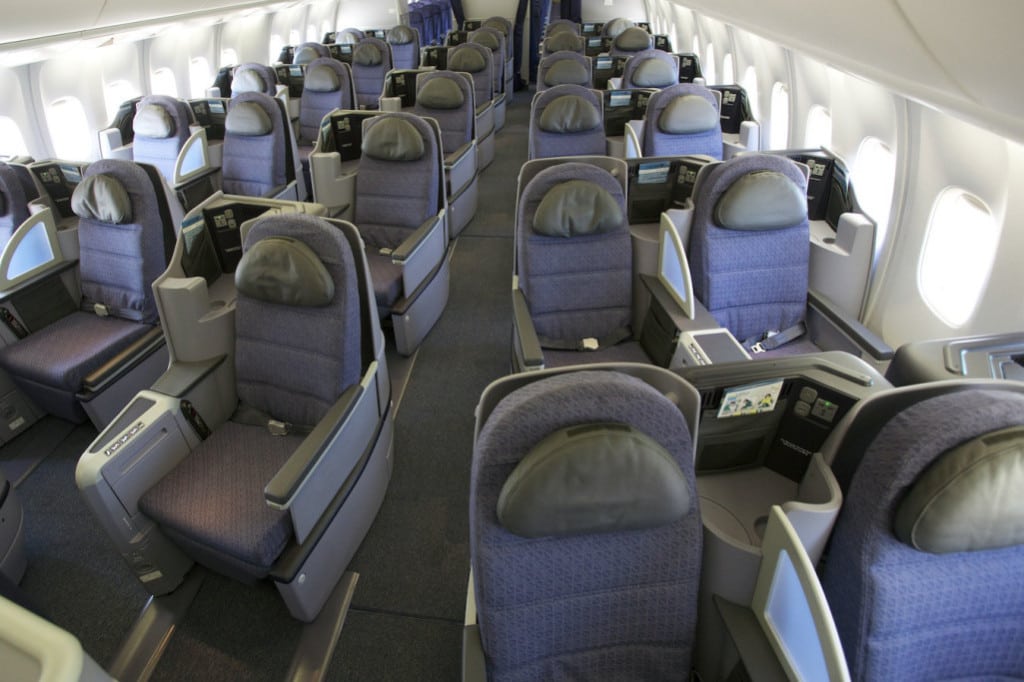Skift Take
Passengers do choose what airline to fly based on network advantage. Fares too. But it is good to see any airline work to turn around a blemished image by focusing on the customer. Friendly never hurts.
Despite years of substantial hiccups and challenges after its merger with Continental Airlines, United Airlines insists it is committed to delivering on the original promise of ‘the Friendly Skies.’
“After the merger we really take a step back to see what we wanted our brand promise to be: the world’s most flyer-friendly airline,” United’s Managing Director, Marketing and Product Development, Mark Krolick, tells Skift. “Everything we’re doing is all supporting that idea.”
And United has been busy. From little comfort details like the new in-flight amenity kit partnership with Cowshed spa products, to more substantial improvements like a fresh menu revamp, to the slow roll out of a new personalized website, and a massive investment to improve customer-facing space at LAX; to the most recent announcements of an airport way-finding and service search feature added to its app, and a complete refurbishment of its 767 fleet, United keeps working on that flyer-friendly goal.
Krolick acknowledges the airline has not always delivered on its promise, pointing out that all airline operations confront issues, but he tells us that United places great importance on resolving issues quickly. Whenever something goes wrong, he says, United’s team gets busy working behind the scenes to ensure that customers are taken care of and that the ‘friendly’ promise is fulfilled.
“When there are challenges in our operation, whether they be systems or weather, ensuring that we have the right product and service is more important than ever,” he says. “It allows our customers to enjoy their experience with United. It doesn’t ever negate the fact that we have to have the best products to meet our customers needs.”
Industry analyst, Robert W. Mann, Principal at R.W. Mann & Company, believes all airlines need to take stock and improve their passenger product. “[It’s not a problem] specific to United, they all need to perform more reliably for customers,” he says. “If they did, the industry wouldn’t serve as ‘a piñata for punishment’, suffering free swings for customers, regulators, legislators, judiciary.”
United is making necessary investments to improve its products and services. The refurbished 767s will include new seats, new trim and fabrics, larger overhead bins and in-seat power from nose to tail, along with Panasonic satellite Wi-Fi and on-demand seat-back entertainment services. United spokesperson Rahsaan Johnson tells us that United is also taking advantage of the downtime required to refurbish these aircraft by “re-baselining” aircraft systems “to ensure a more robust fleet.” The technical upgrades to the aircraft will avoid service disruptions. “By replacing those systems with completely new components, we can better ensure their reliability,” he says.
Krolick also tells us that United tries to keep up with change in the industry and improvements made by its competition.
“We try to be nimble to ensure that we always have the most competitive product,” he says. “We have many more innovations that we intend to roll out in the next years.”
Among the improvements passengers can expect, are a broader range of entertainment content and more improvements in United’s Wi-Fi connections.
“United has a very differentiated product in that we were the first to launch global satellite service,” says Krolick. “We’re going to be innovating in that front in order to maintain product differentiation.”
At the end of the day, however, Krolick believes customers make their choices based on factors beyond the cabin product.
“The ultimate product that people are buying is network and schedule and the frequencies, schedules and destinations. These are the most important factors for flyers,” he says. “Network United beats the competition.”
Recognizing that its competition is moving in on that strong network, United isn’t being complacent.
Instead, Krolick says, United makes meeting passenger expectations a priority, and the opinions of both customers and staff guide all product decisions.
“In general, we have an ongoing dialogue with our customers from customer surveys, and market research,” he says. “Every single product and service we’ve developed on ‘flyer-friendly’ has come from customer feedback and employee feedback.”
Getting employees to buy-in on the ‘flyer-friendly’ promise, is critical for United, which has had to bring together employees from two different airlines, each with its own brand history, corporate practices, and engrained habits.
“We really start by focusing this entire campaign first internally, to ensure that our front line employees really buy into the idea of being ‘flyer-friendly,’” Krolick says. “Number one, we understand what we’re trying to become and what we’re trying to do. And we can do this. This is something we can do right now.”
Mann believes ‘now’ is just in time.
“It’s within the industry’s power and ability to act,” Mann says, “in the absence of which [airlines] will continue to suffer the slings and arrows of consumer, legislator, regulatory complaints.”
For United’s part, Krolick is fully committed to rapid change: “We’ve had the ‘flyer-friendly’ brand strategy from the start, and it’s only grown.”
The Daily Newsletter
Our daily coverage of the global travel industry. Written by editors and analysts from across Skift’s brands.
Have a confidential tip for Skift? Get in touch
Tags: passenger experience, united airlines
Photo credit: United will refurbish its 767 fleet for improved passenger experience and reliability. United Airlines
